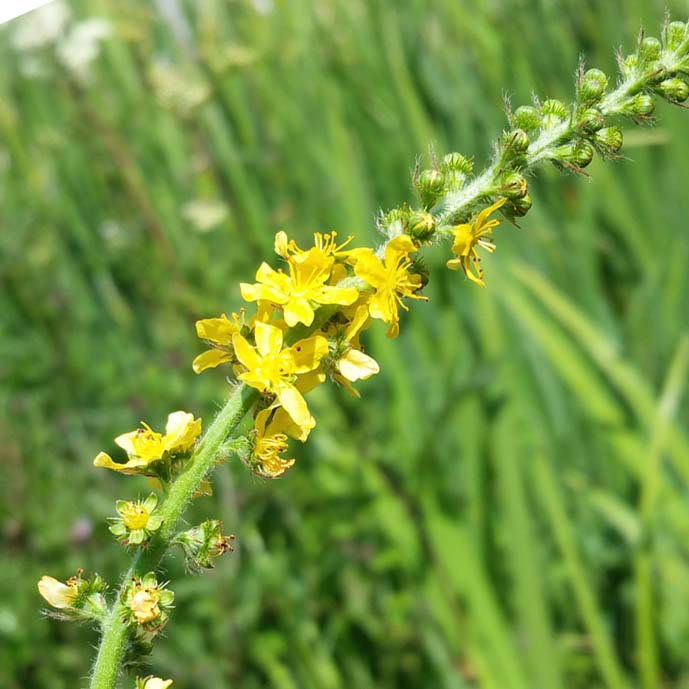As well as its common English name ‘Agrimony’, the lovely wildflower Agrimonia eupatoria has lots of other names including Gaelic ones like ‘Geur-bhileach’ ‘Mirean’, & ‘Muir-dhroigh’ and more. If like me you are not a Gaelic speaker you might enjoy books like ‘Gaelic Names for Flowers & Plants’ by Douglas Clyne or ‘Gaelic Names of Plants’ by Joan Clark & Ian MacDonald. There are other English names as well including ‘Church Steeple’ probably due to the pointy gothic silhouette of its flowers. As always, if you know of other names, in particular Scots ones, it would be good to hear them.

Some names refer to its traditional uses including its use a treatment for elf-shot, a malady, often of cattle with rather general symptoms. There are also lots of records of its use by people for less magical purposes, including as an astringent, a flavouring for wine and tea and its use for making a yellow dye. ‘The Scots Herbal’ by Tess Darwin is a great collection of wild plant uses and names.
Agrimony is definitely used by lots of wild pollinators including bumblebees for nectar and for pollen. Much further south it is also the food plant for the caterpillars of Grizzled Skipper butterfly.
If you want to grow it, it needs well drained, very lightly acid neutral to chalky soil and a quite sunny site. It is a pretty plant that has a lovely, peach-like scent.
Agrimony has got some seed quirks. Its fruit have a little fringe of hooks around their wide, circular top. Those hooks help it to move its seeds on the fur (or clothes!) of passing animals but those fruit, when dry are also rock hard making the seed really well protected. It need a nice period of softening moisture in the soil to release it 3 or 4 seeds.
Agrimony is found in our Dry Places Wildflowers and Dry Meadow Mixes.
